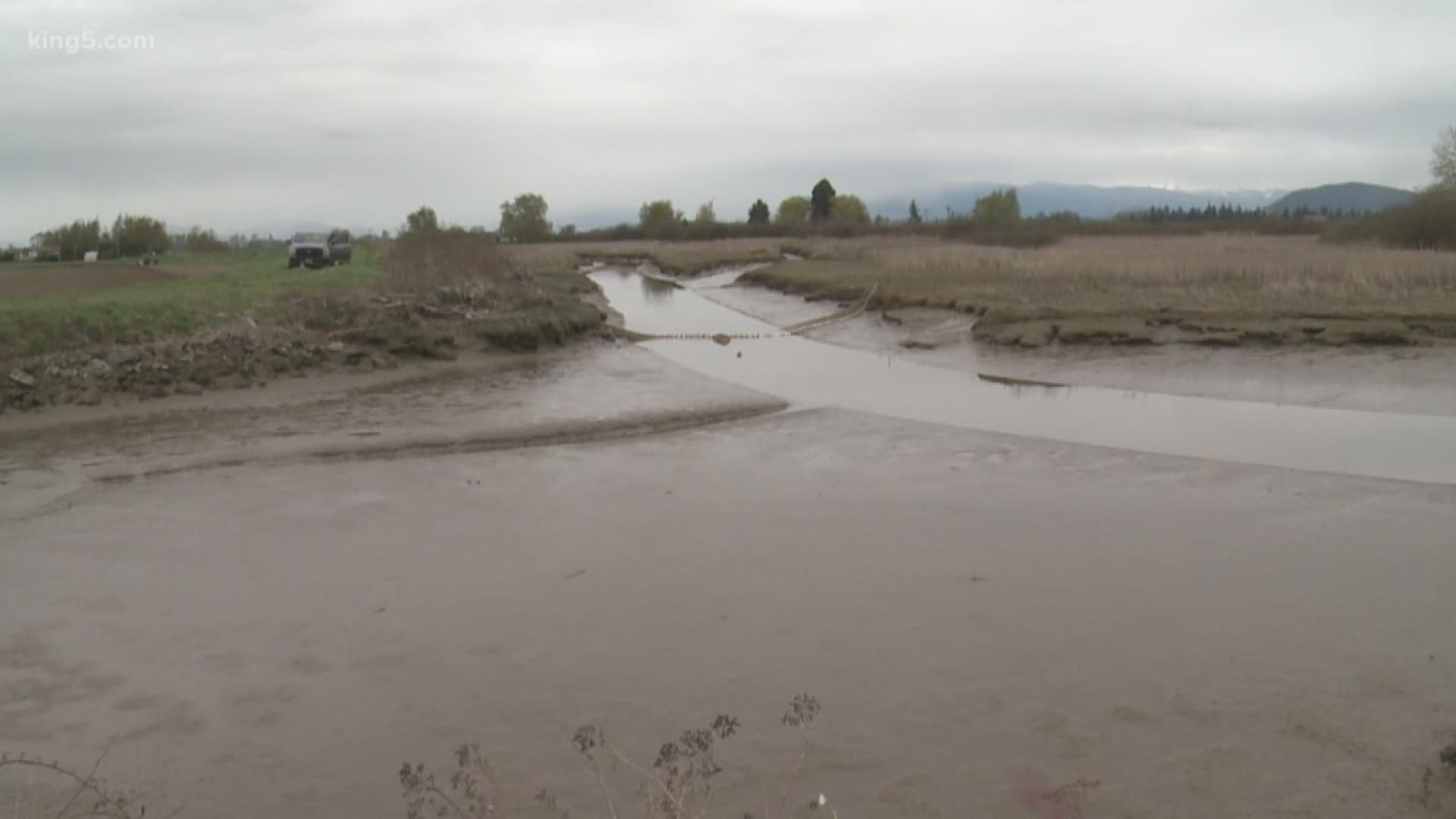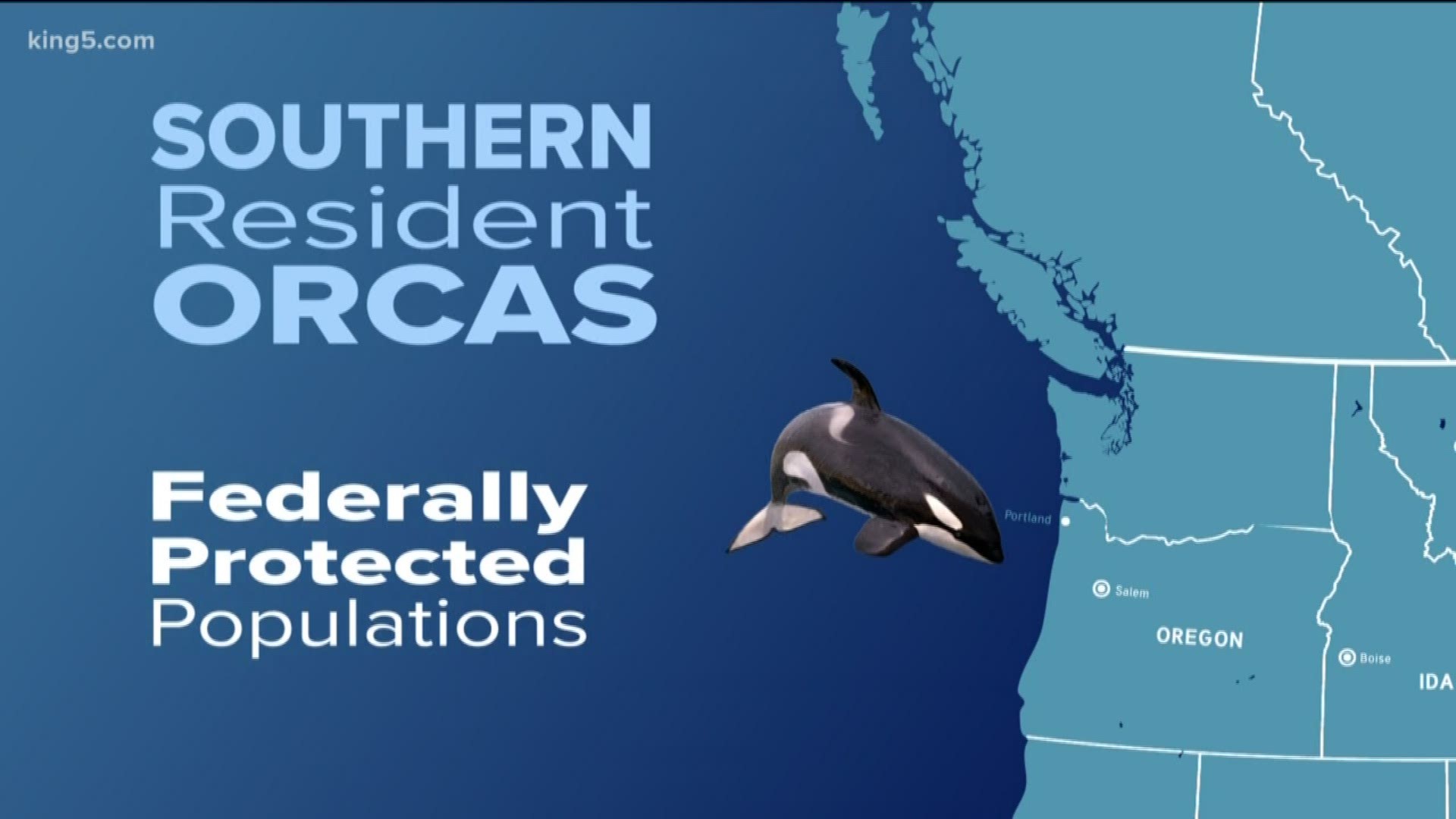MT VERNON, Washington — Recently we traveled up the Skagit River to see salmon habitat in what's called a freshwater floodplain, which is a very important area for young salmon to grow big enough to head down stream.
Down river is the Skagit estuary, where older salmon migrate to grow even stronger for their journey to the ocean. The estuary shows how closely humans and salmon are competing for habitat.
"Salmon recovery, unfortunately, is a complicated thing because the critter we are studying and wanting to recover is complicated. It lives in all these different places, from freshwater to the Pacific ocean, to the Gulf of Alaska. There are lots of bottlenecks to survival," Eric Beamer said.
Beamer is the research director for Skagit River System Cooperative. He has worked decades to figure out how to save wild Chinook salmon, which makes up the majority of the orca's diet.
He showed us what the Skagit River estuary looked like many years ago. Hiking through it isn't easy, as water and mud make for sticky ground and side channels can form at any time right under your feet.
"This channel might be about a half mile long before it enters into the bay," Beamer explained.
The channels give safe habitat filled with food for growing Chinook, but areas like it have decreased by 80% along the Skagit estuaries.
Even if more hatchery salmon are produced, or pollution is curbed, or seals and sea lions are killed, Beamer said, in the Skagit there's only so much room.
"So working on the wrong thing wouldn't have any benefit or would have minimal benefit to the Skagit," he said.
Right now, the Skagit estuaries can support about 2.25 million juvenile Chinook and wildlife officials want to increase that by 60%. That will mean restoring hundreds of acres and protecting existing habitat.
Todd Mitchell is the Swinomish Tribe Environmental Director. He showed us a project where a dike once prevented fish passage. The tribe installed a tidal gate that allows for better fish passage upstream.
"Hopefully one day we have abundant salmon to have available for all our tribal members and everyone else," Mitchell said.
There is so much habitat to restore for salmon around the Puget Sound region some estimate it will take 90-100 years, not just to complete the work, but also to monitor changes and learn from mistakes.
"[It takes] years and decades to understand what actions are working the best, the most efficiently, and intervally improve upon them through future knowledge and understanding," said Skagit River System Cooperative Senior Research Scientist, Mike Lemoine. "Understanding all of those helps us to understand what supports not just salmon but orcas."
For Beamer and others, there's not one simple solution for whales or salmon. On the Skagit, however, Beamer said the main solution is habitat. He's not hopeful he'll see salmon recovery in his lifetime, but perhaps his grandchildren will.
"It is a societal experiment and we will see if society is willing to change behavior enough to do the work to protect the habitat to achieve Salmon Recovery goals," Beamer said.
Join us on April 30 and May 8 from 7:30 pm – 8:30 p.m. for live expert panels discussing themes central to the livelihood of Southern Residents. Visit king5.com, our Facebook page or YouTube page to ask questions and make comments directly to those on the front lines of recovery. Learn more about our “Saving the Orcas” series here.


